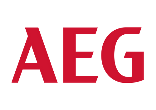
Flood management via satellite observation
On 8 - 10 March, the Luxembourg Institute of Science and Technology participated in a working group meeting of the Committee on Earth Satellites (CEOS) at the German Aerospace Center in Bonn.
CEOS is an international organization founded in 1984, which is made up of 31 members, predominately space agencies. The aim of CEOS is to pool expertise and capacity in the field of Earth observation. To achieve this various specialized working groups have been established. One of these groups is the Working Group on Disasters, which is the group that met in Bonn. The working group is addressing more specifically the matter on how Earth observation satellites could help detect and study natural disasters in a more effective way. The space agencies involved in CEOS are providing free access to satellite data to allow the scientists to demonstrate the utility of their data for large scale disaster risk reduction. In Bonn there were 30 participants from 10 agencies spread across three continents - namely Europe, America and Asia - but there were also scientists and representatives from the UN and the European Commission. LIST was represented by Dr Patrick Matgen who works on flood management via satellite observation.
LIST has developed several methods and technologies for flood management via satellite :
– A method for automatically mapping flood fields based on radar satellite images ;
– A method for assimilating information from remote sensing in hydraulic models so as to improve the reliability of predictions ;
– iGUESS software which makes it possible to integrate and analyze satellite data, data collected in situ and the results of prediction models on a joint platform ;
– A tangible table device, making it possible to simulate different scenarios and make decisions collectively.
All these technologies brought together form a virtual flood prevention and management crisis centre, that makes it possible to consult rainfall recordings from the last few hours, soil moisture, changes in water level, and river flow measurements by using both satellite images and data collected on the ground such as urban characteristics. The information is automatically integrated into prediction models and then viewed on a tangible table.
The technologies can be used for flood hazard and risk mapping, as large-scale flood prediction system, as decision support tool enabling optimal planning of flood risk reduction measures, and as decision support tool for organizing evacuations and delivery of emergency relief.
For more information, feel free to contact Dr Patrick Matgen
Visit also the website of the CEOS !
Source : LIST – www.list.lu









